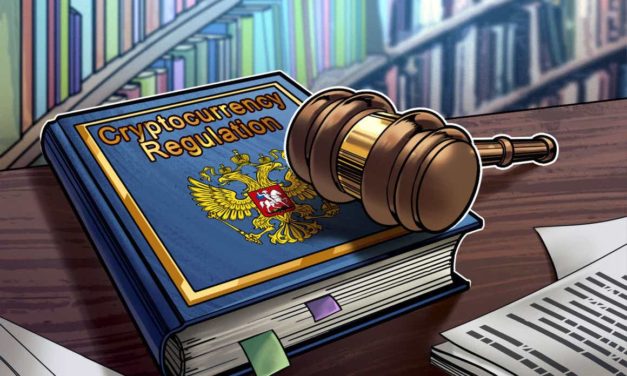Fitting the bill: US Congress eyes e-cash as an alternative to CBDC
On March 11, United States President Joe Biden issued an executive order in which he encouraged the Federal Reserve to continue research on a prospective U.S. central bank digital currency, or CBDC.The order emphasized that the market capitalization of digital assets had surpassed $3 trillion in November — with Bitcoin (BTC) representing more than half of the total value of all cryptocurrency and peaking at over $60,000 — up from just $14 billion five years prior. For comparison’s sake, the U.S. money supply (M1) in the same month was $20.345 trillion.Stephen Lynch, a member of Congress who chairs the Task Force on Financial Technology, introduced the Electronic Currency and Secure Hardware Act on March 28, which would develop “an electronic version of the U.S. Dollar for use by the American public.” How does this project fit into the existing U.S. CBDC frameworks? Is Lynch’s e-cash a CBDC or not?Curiously, the specialists tasked with authoring the concept claim it isn’t a true CBDC because it would be issued by the U.S. Treasury rather than the U.S. Federal Reserve, the central bank system.Rohan Grey, an assistant law professor at Willamette University’s College of Law who helped draft Lynch’s bill, said in an interview that the Fed doesn’t have the statutory authority to create a CBDC or the capacity to maintain the retail accounts that would be required for it. Instead, he described the digital dollar as something replicating the privacy, anonymity and transactional freedom reflecting the properties of physical cash.He noted that it would neither use a centralized ledger (like most proposed CBDCs) nor a distributed ledger (like crypto) and maintain its security and integrity through its hardware. According to Grey, beyond that, giving the Fed the power to conduct the electronic surveillance of digital currency isn’t a good idea because of the potential for infringing on users’ privacy. He positioned e-cash as a third alternative beyond account-based CBDCs and crypto, which addresses concerns related to privacy and surveillance.Isn’t online banking enough?Last summer, crypto critic Senator Elizabeth Warren argued that there was no need for digital money because U.S. money is already accessed digitally. Lynch’s proposal reflects a different perspective in the Democratic party. What attracts him?In Europe, China and other parts of the world, it’s common to transfer money via online apps or with debit card payments. While these exist in the U.S., they complement an older “legacy” system of paper checks. While the use of personal paper checks by individuals has declined significantly over the past 20 years, the U.S. government and U.S. businesses still use them to send money. This makes things difficult for the millions of adults who are “unbanked” or “underbanked”: those who lack a bank account and commonly rely on check-cashing services, which charge high rates. Many consider these extra expenses too high or disproportionately high, given that these services are considered the most essential by the least economically resilient segment of the population. Many U.S. politicians are worried about economic inequality issues, especially since the 2008 financial crisis and more recently in the wake of the 2020 riots. Additionally, when Americans use credit cards or digital platforms to make payments, retailers must pay third-party fees, which adversely affects the cash-based economies of poorer and immigrant-dominated communities. Small businesses, landlords and individuals providing services often must rely on paper checks.Sending paper checks also involves unacceptable lag times involved in their transfer, receipt and processing. The number of banks in the U.S. is in the thousands, while in Canada, just five account for most residents. This means that bank-to-bank transfer costs associated with sending money are essentially unavoidable.Normally, the U.S. Bureau of Engraving and Printing (which is under the Department of the Treasury) prints banknotes that are then circulated by the U.S. Federal Reserve. All U.S. banknotes are called Federal Reserve Notes. The proposed digital money would also enter circulation under the Department of the Treasury, but it’s unclear what role the Federal Reserve would play. The proposed money would be introduced on an experimental basis, so there would likely be a cap on the issuance, ensuring that it wouldn’t have much of an effect on M1.The Fed’s takeWhile the Treasury is under the purview of the executive branch of the government, the Federal Reserve has some degree of independence. Federal Reserve Chair Jerome Powell is the chairman of the board of governors, who are appointed by the president and confirmed by the Senate much like judges, except that judges may be appointed for life while a Fed governor holds their position for 14 years.After the Fed issued its own white paper on the issuance of a CBDC in January, not all of the governors were keen on the idea. Powell argued last summer for caution and looked to Congress for new legislation regarding a CBDC.One of the Fed governors, Randal Quarles — vice chair for supervision — called the benefits of a CBDC “unclear” last year and the risks “significant and concrete.”“Bitcoin and its ilk will, accordingly, almost certainly remain a risky and speculative investment rather than a revolutionary means of payment, and they are therefore highly unlikely to affect the role of the U.S. dollar or require a response with a CBDC,” Quarles said in an address to the Utah Bankers Association, later clarifying that this was his opinion rather than that of the Fed itself.Interestingly, Powell’s approach to regulating stablecoins was more proactive.“We have a pretty strong regulatory framework around bank deposits, for example, or money market funds. That doesn’t exist really for stablecoins,” Powell said in a congressional hearing last July. “If they are going to be a significant part of the payments universe — which we don’t think crypto assets will be, but stablecoins might be — then we need an appropriate regulatory framework, which, frankly, we don’t have.”On March 31, Representative Trey Hollingsworth and Senator Bill Hagerty proposed the Stablecoin Transparency Act, which would require stablecoins “to be backed by government securities with maturities less than 12 months or domestic dollars while requiring stablecoin issuers to publicly release audited reports of reserves executed by third-party auditors,” according to a financial services newsletter.All debts, public and privateOne key difference between prospective e-cash and the U.S. dollar is that the latter is universally accepted. If e-cash mirrors the price of the dollar, a lot of people simply won’t take it, preferring to get old-fashioned USD. Historically, such pegs have left central banks at the mercy of speculators.During the American Civil War, U.S. fiat currency faced its first hurdle when people flatly preferred gold and silver coins to printed money, resulting in price fluctuations. Eventually, the U.S. returned to gold and silver coinage.Over a century later, the French government under Charles de Gaulle succeeded in breaking the fixed $35-per-ounce exchange rate between U.S. dollars and gold established at Bretton Woods in the aftermath of World War II, and in the 1990s, billionaire investor George Soros “broke the Bank of England” by betting big on the United Kingdom’s inability to maintain Sterling’s peg to European currencies in the lead-up to the introduction of the euro.This partly helps explain why legislators advocating e-cash are so interested in making it as much like existing U.S. money in circulation as possible.Apples and orangesThe wide-scale use of e-cash could necessitate a complete shift in the nature of financial regulation in the U.S. if it gets approval and passes the experimental stage. Importantly, it would sidestep the need for traditional retail banking, making the storage and transfer of funds a public service rather than a fee-based service. Federal monetary policy was built around the management of the economy through commercial banks, which helps to explain the hesitancy of certain central bankers like Quarles.A lot has to do with the volume of e-cash being generated. Central bankers do have one good point: Stablecoins have enhanced the transactional value of crypto for those whose primary interest is in sending cash rather than investing. Legislators have much to lose and little to gain if they risk introducing a national e-currency that doesn’t work, especially in an inflationary economy.
Čítaj viac





